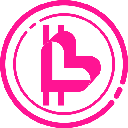-
 bitcoin
bitcoin $95203.028270 USD
-4.12% -
 ethereum
ethereum $3151.730711 USD
-1.61% -
 tether
tether $0.999170 USD
-0.04% -
 xrp
xrp $2.273039 USD
-1.55% -
 bnb
bnb $924.288432 USD
0.14% -
 solana
solana $141.112899 USD
-2.02% -
 usd-coin
usd-coin $0.999964 USD
0.02% -
 tron
tron $0.293976 USD
0.82% -
 dogecoin
dogecoin $0.160772 USD
-1.84% -
 cardano
cardano $0.506357 USD
-3.90% -
 hyperliquid
hyperliquid $37.900515 USD
0.03% -
 zcash
zcash $644.358451 USD
26.66% -
 chainlink
chainlink $14.062007 USD
-2.60% -
 bitcoin-cash
bitcoin-cash $484.381072 USD
-5.12% -
 unus-sed-leo
unus-sed-leo $9.199874 USD
0.27%
How to choose the right blockchain platform for a project?
When selecting a blockchain platform, consider transparency needs, data sensitivity, transaction volume, smart contract requirements, and regulatory compliance to ensure long-term success.
Nov 15, 2025 at 09:19 am

Understanding Project Requirements and Use Cases
1. Every blockchain project begins with a clear understanding of its purpose. Identify whether the application requires public transparency or private permissions. Public blockchains like Ethereum offer open access, while platforms like Hyperledger Fabric are designed for enterprise use with restricted access.
2. Determine the type of data that will be stored on-chain. If sensitive information is involved, a permissioned system may be necessary to comply with regulatory standards such as GDPR or HIPAA.
3. Consider transaction volume and frequency. High-frequency applications such as payment systems benefit from scalable platforms like Solana or Binance Smart Chain, which support thousands of transactions per second.
4. Evaluate the need for smart contract functionality. Platforms like Ethereum, Cardano, and Avalanche provide robust environments for deploying programmable contracts, essential for DeFi, NFTs, and DAOs.
5. Assess geographic reach. A global user base may require a decentralized network with strong node distribution to ensure uptime and resistance to censorship.
Technical Performance and Scalability Factors
1. Transaction speed is a critical metric. Blockchains vary significantly in throughput; Bitcoin processes around 7 TPS, whereas Solana can handle over 60,000 TPS under optimal conditions.
2. Latency matters for real-time applications. Some chains finalize transactions in seconds, others take minutes. For gaming or trading platforms, low confirmation times are non-negotiable.
3. Gas fees impact user experience. Ethereum’s fee volatility has driven many developers toward Layer-2 solutions like Arbitrum or Optimism, where costs are lower and more predictable.
4. Network congestion must be anticipated. During peak usage, some platforms suffer performance degradation. Choosing a chain with proven load-handling capabilities ensures reliability.
Scalability solutions such as sharding, sidechains, or rollups should be evaluated based on long-term operational demands, not just current benchmarks.Ecosystem Support and Developer Tools
1. A mature development environment includes comprehensive documentation, SDKs, testing frameworks, and active community forums. Ethereum leads in this area, with extensive tooling like Hardhat, Truffle, and Remix.
2. Availability of pre-built smart contract templates accelerates deployment. OpenZeppelin provides audited contracts widely used across multiple EVM-compatible chains.
3. Third-party integrations enhance functionality. Look for platforms that support easy connection to oracles (e.g., Chainlink), wallets (MetaMask, WalletConnect), and analytics tools.
4. Programming language compatibility affects team productivity. Solidity dominates on EVM chains, while Rust is used on Solana and Polkadot, requiring different skill sets.
5. Regular updates and protocol improvements indicate a healthy ecosystem. Chains with active research teams and governance mechanisms adapt faster to emerging threats and opportunities.
Security and Consensus Mechanisms
1. The choice between Proof of Work (PoW) and Proof of Stake (PoS) influences security models. PoW relies on computational power, making attacks costly but energy-intensive. PoS uses economic stakes to secure the network, reducing environmental impact.
2. Finality guarantees matter for financial applications. Tendermint-based chains like Cosmos offer immediate finality, eliminating the risk of reorgs common in longest-chain rule systems.
3. Audit history reveals potential vulnerabilities. Platforms with frequent third-party audits and transparent bug bounty programs demonstrate stronger commitment to safety.
Decentralization level directly correlates with attack resistance—networks with geographically dispersed validators are less prone to single points of failure.4. Upgrade mechanisms affect long-term viability. Hard forks can disrupt services if not coordinated properly, while on-chain governance allows smoother transitions.
Frequently Asked Questions
What role does token economics play in platform selection?Token design impacts incentive alignment, staking rewards, and fee structures. Projects built on platforms with sustainable tokenomics avoid inflationary pressures and maintain validator participation.
How do cross-chain interoperability needs influence platform choice?Applications requiring asset transfers across networks benefit from platforms integrated with bridges or part of ecosystems like Polkadot or Cosmos, which prioritize inter-blockchain communication.
Can a project switch blockchain platforms after launch?Migration is technically possible but complex. It involves redeploying contracts, bridging assets, and re-establishing trust. Choosing the right platform early reduces technical debt and user friction.
Are there compliance considerations when selecting a blockchain?Yes. Regulated industries must consider traceability, identity verification, and data retention. Permissioned ledgers often align better with legal frameworks than fully anonymous public chains.
Disclaimer:info@kdj.com
The information provided is not trading advice. kdj.com does not assume any responsibility for any investments made based on the information provided in this article. Cryptocurrencies are highly volatile and it is highly recommended that you invest with caution after thorough research!
If you believe that the content used on this website infringes your copyright, please contact us immediately (info@kdj.com) and we will delete it promptly.
- Indian Treaty Medal Prominence XIII Sale: A Numismatic Triumph
- 2025-11-15 21:10:02
- Bumrah's Brilliance: India vs. South Africa Test Series Heats Up
- 2025-11-15 21:10:02
- Decoding the Crypto Crystal Ball: Will Apeing Outpace XRP and BNB in 2025?
- 2025-11-15 12:25:02
- HBAR, Zero Knowledge, and the Privacy Revolution: What's the Smart Money Doing?
- 2025-11-15 11:40:02
- Crypto Presales Face-Off: Is Digitap ($TAP) Really Toppling BlockDAG?
- 2025-11-15 11:35:01
- Tokenization, 24/7 Markets, and Vlad Tenev: The Future of Finance?
- 2025-11-15 11:30:01
Related knowledge

What is the difference between a blockchain and a distributed ledger technology (DLT)?
Nov 14,2025 at 08:59pm
Understanding the Core Structure of Blockchain and DLT1. A blockchain is a specific type of distributed ledger technology that organizes data into blo...

How does a blockchain handle data storage?
Nov 14,2025 at 04:40pm
Understanding Blockchain Data Structure1. A blockchain stores data in sequential blocks, each containing a list of transactions or records. These bloc...

What are the risks of investing in blockchain projects?
Nov 14,2025 at 10:19am
Risks Associated with Volatility in Cryptocurrency Markets1. The price of digital assets can shift dramatically within minutes due to speculation, new...

What is the role of blockchain in creating a circular economy?
Nov 15,2025 at 02:19am
Enhancing Transparency in Supply Chains1. Blockchain technology provides an immutable ledger that records every transaction across supply chains, ensu...

How can blockchain technology be used in healthcare?
Nov 14,2025 at 07:39pm
Secure Patient Data Management1. Blockchain enables decentralized storage of medical records, ensuring patients maintain control over who accesses the...

What is a light node versus a full node in a blockchain?
Nov 15,2025 at 02:00pm
Understanding Light Nodes in Blockchain Networks1. A light node, also known as a lightweight client, does not download the entire blockchain. Instead,...

What is the difference between a blockchain and a distributed ledger technology (DLT)?
Nov 14,2025 at 08:59pm
Understanding the Core Structure of Blockchain and DLT1. A blockchain is a specific type of distributed ledger technology that organizes data into blo...

How does a blockchain handle data storage?
Nov 14,2025 at 04:40pm
Understanding Blockchain Data Structure1. A blockchain stores data in sequential blocks, each containing a list of transactions or records. These bloc...

What are the risks of investing in blockchain projects?
Nov 14,2025 at 10:19am
Risks Associated with Volatility in Cryptocurrency Markets1. The price of digital assets can shift dramatically within minutes due to speculation, new...

What is the role of blockchain in creating a circular economy?
Nov 15,2025 at 02:19am
Enhancing Transparency in Supply Chains1. Blockchain technology provides an immutable ledger that records every transaction across supply chains, ensu...

How can blockchain technology be used in healthcare?
Nov 14,2025 at 07:39pm
Secure Patient Data Management1. Blockchain enables decentralized storage of medical records, ensuring patients maintain control over who accesses the...

What is a light node versus a full node in a blockchain?
Nov 15,2025 at 02:00pm
Understanding Light Nodes in Blockchain Networks1. A light node, also known as a lightweight client, does not download the entire blockchain. Instead,...
See all articles









































































